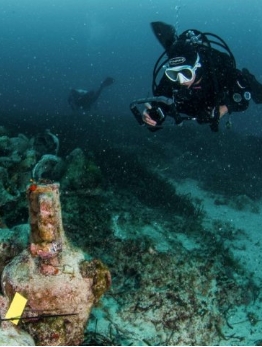“In history, a great volume is unrolled for our instruction, drawing the materials of future wisdom from the past errors and infirmities of mankind.” – Edmund Burke
In this day and age, the human growth is rapid. We are moving forward and surprisingly quickly at that, in every field. But, with that growth comes the wonder and the need in fact, to know what was left behind. Civilisations have come and gone, forming a solid base for the society to build upon. It is important for us to understand the past to grasp the present. For this very reason, wielding knowledge, many people go out in the hidden corners of the world, looking for traces of our past. Recent searches have given to us the secret chamber under the Great Pyramid of Giza and new weapons from the Vikings. All this adds to our large repertoire of knowledge that is helping us understand the past of our beloved blue planet.

Ruins of Mesa Verde (Image courtesy: Pixabay)
The nature of earth’s existence becomes clearer through such finds. One such find happens to be ruins of cities, many underwater. While, we have not yet found Atlantis… not yet, not yet, BUT we have made some progress!
Tunisian and Italian teams of archaeologists have found two submerged Roman cities.
In September 2017, a 50-acre expanse of submerged Roman ruins was discovered off the Tunisian coast. Named ‘Neapolis’ or ‘New City’, this was a city that was submerged underwater by a tsunami in 365 A.D., and is directly under Nabeul, an Arabian settlement in Tunisia. The settlement is about 1700 years and was swept underwater when a massive tsunami engulfed the Mediterranean, levelling the entire coast as well as the ancient city of Alexandria. A study was published in 2013 that estimated that an earthquake measuring 8 on the Richter Scale wiped the city clean… ouch!
The search for the site was started in 2010, and the first sighting they had of the city was in the beautiful summer of 2017.
The search led to the discovery of streets, monuments as well as 100 tanks that were used to make ‘garum’; a fish-based sauce that was eaten in the ancient Roman Empire. The sauce and its traces were found too late though, alas, it had expired a few hundred years ago. The discovery of these tanks led to the establishment of the fact that Neapolis was a large-scale manufacturing city of garum as well as salt fish.

